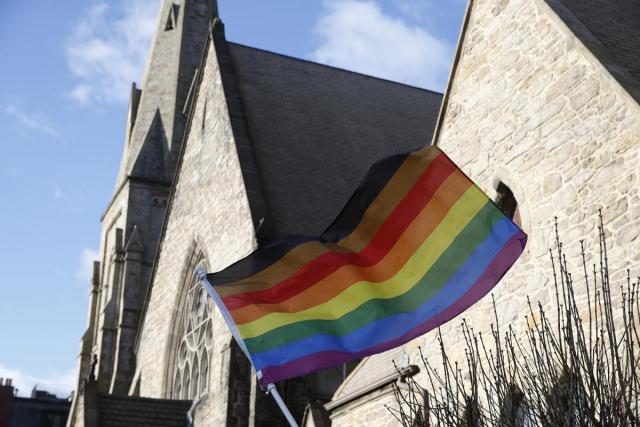Baptist minister Rev. Jacki Belile recommends a three-fold task for congregations seeking to welcome LGBTQ people:
- “Take into account the depth of people’s betrayal and pain at the hands of the institutional church in all the dimensions of fellowship, preaching, teaching, and pastoral care”;
- Offer “significant opportunities for LGBT people to have visibility, voice and leadership roles in the life of the community”; and
- Ask this question: “to what are we welcoming folks?” (Belile, “Building Well-coming Communities of Faith,” 4–5.)
 In this – and the next several – installment of our 52 Ways Series we will explore some ways that congregations can become communities of care for LGBTQ people by welcoming and including them in all aspects of congregational life. This is no small task given the fact that queer people have long experienced significant alienation and outright discrimination from churches and synagogues.
In this – and the next several – installment of our 52 Ways Series we will explore some ways that congregations can become communities of care for LGBTQ people by welcoming and including them in all aspects of congregational life. This is no small task given the fact that queer people have long experienced significant alienation and outright discrimination from churches and synagogues.
For centuries religious institutions of all kinds have persecuted queer people because of their sexual desires and sexual activity and, despite the fact that several Christian denominations now affirm LGBTQ people and their sexuality, most, in fact, still teach that homosexual activity is sinful and that being transgender is somehow disordered.
LGBTQ people have always been present and active in congregations of every religious tradition and denomination, however closeted many have been in order to survive in their local faith communities. To speak of straight people “welcoming” LGBTQ people into congregations, therefore, can cause us to ignore this long-time presence of queer members and attenders. Perhaps more accurate terms for congregations that seek to become communities of care for LGBTQ people would be “recognizing,” “acknowledging,” and “embracing” congregations. Whatever terms are used, however, it is important to recognize the fact that “welcoming” LGBTQ persons may mean beginning with those who are already present within the congregation.
A congregation that commits itself to becoming a community of care will necessarily be transformed by the queer people who are invited to live as out and full-fledged members of the congregation. In fact, I believe that a congregation whose members fear such transformation is not yet ready to become a community of care because it is unable to incorporate and celebrate LGBTQ people who bring unique gifts, talents, and needs to the religious community.
live as out and full-fledged members of the congregation. In fact, I believe that a congregation whose members fear such transformation is not yet ready to become a community of care because it is unable to incorporate and celebrate LGBTQ people who bring unique gifts, talents, and needs to the religious community.
The process of creating a welcoming community may challenge straight individuals in profound ways. For instance, open displays of affection between queer people, recognition of LGBTQ families, the preaching of sermons based on queer readings of Scripture, and calling LGBTQ individuals to positions of visible leadership – these may cause discomfort for some straight members of a congregation.
To welcome queer people into congregations of faith is risky precisely because it is an invitation that involves change on the part of those who have the power to do the welcoming. We know that people were deeply unsettled by demands from the Hebrew prophets and from Jesus to welcome and love the poor, the stranger, the immigrant, and other outcast persons. In similar fashion people today can become unsettled by calls to welcome queer people into congregational life. And yet, just as many people in the Hebrew and Christian Scriptures were blessed with unexpected gifts when they heeded a call to embrace the marginalized and the outcast, so too can congregations today expect spiritual growth and a revitalization of community life when doors of welcome are opened to LGBTQ people.
In upcoming installments of this series we will explore in some depth these Three Basic Steps to Building a Community of Care for LGBTQ People:
1. Create a Genuine Welcome
2. Integrate LGBTQ People into the Life of the Congregation
3. Build Alliances with LGBTQ Communities Outside of the Congregation
Stay tuned!
Adapted from Schlager & Kundtz, Ministry Among God’s Queer Folk: LGBTQ Pastoral Care (Second Edition, 2019): pp. 153-155.


